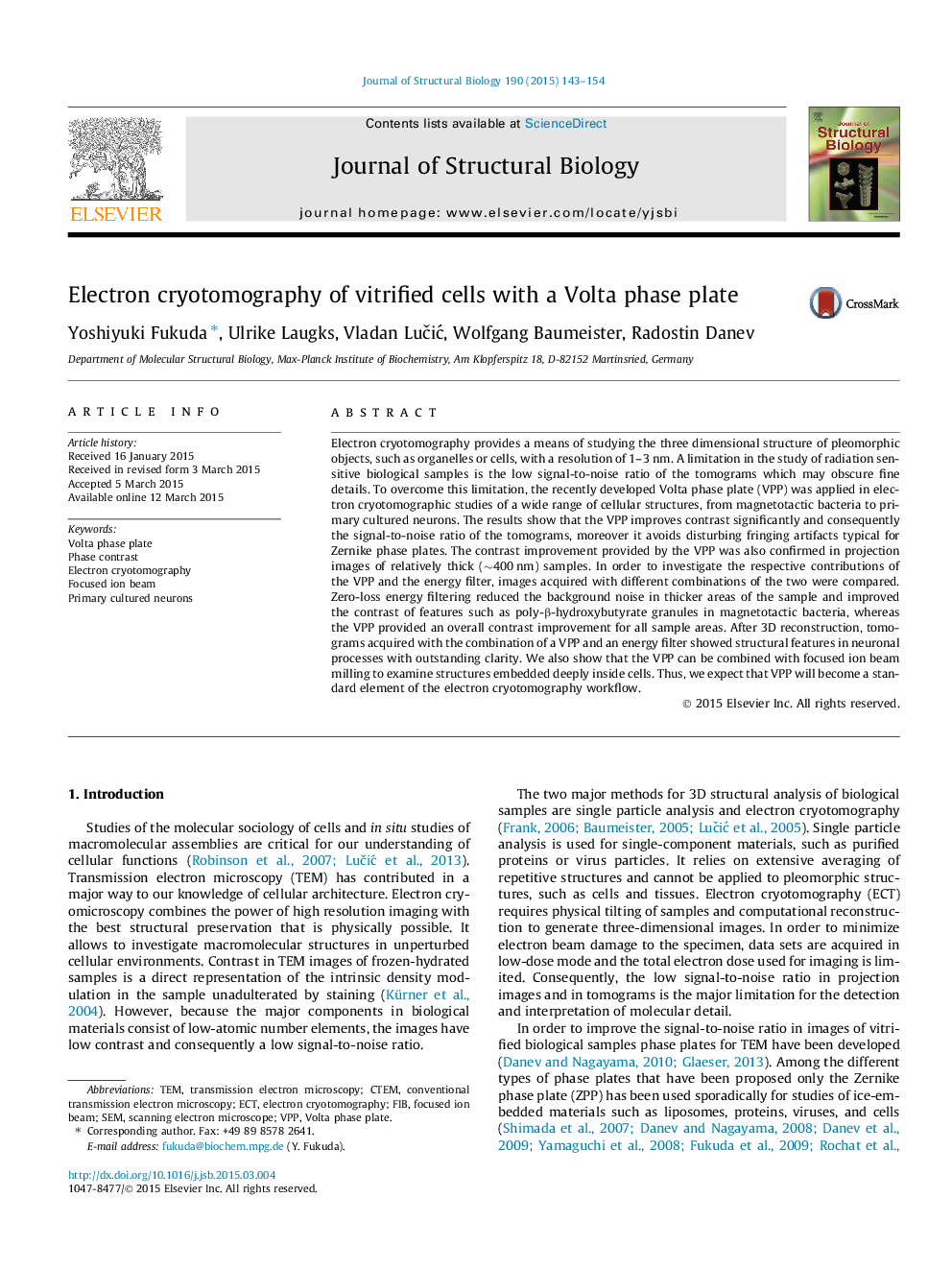| Article ID | Journal | Published Year | Pages | File Type |
|---|---|---|---|---|
| 2828455 | Journal of Structural Biology | 2015 | 12 Pages |
Electron cryotomography provides a means of studying the three dimensional structure of pleomorphic objects, such as organelles or cells, with a resolution of 1–3 nm. A limitation in the study of radiation sensitive biological samples is the low signal-to-noise ratio of the tomograms which may obscure fine details. To overcome this limitation, the recently developed Volta phase plate (VPP) was applied in electron cryotomographic studies of a wide range of cellular structures, from magnetotactic bacteria to primary cultured neurons. The results show that the VPP improves contrast significantly and consequently the signal-to-noise ratio of the tomograms, moreover it avoids disturbing fringing artifacts typical for Zernike phase plates. The contrast improvement provided by the VPP was also confirmed in projection images of relatively thick (∼400 nm) samples. In order to investigate the respective contributions of the VPP and the energy filter, images acquired with different combinations of the two were compared. Zero-loss energy filtering reduced the background noise in thicker areas of the sample and improved the contrast of features such as poly-β-hydroxybutyrate granules in magnetotactic bacteria, whereas the VPP provided an overall contrast improvement for all sample areas. After 3D reconstruction, tomograms acquired with the combination of a VPP and an energy filter showed structural features in neuronal processes with outstanding clarity. We also show that the VPP can be combined with focused ion beam milling to examine structures embedded deeply inside cells. Thus, we expect that VPP will become a standard element of the electron cryotomography workflow.
